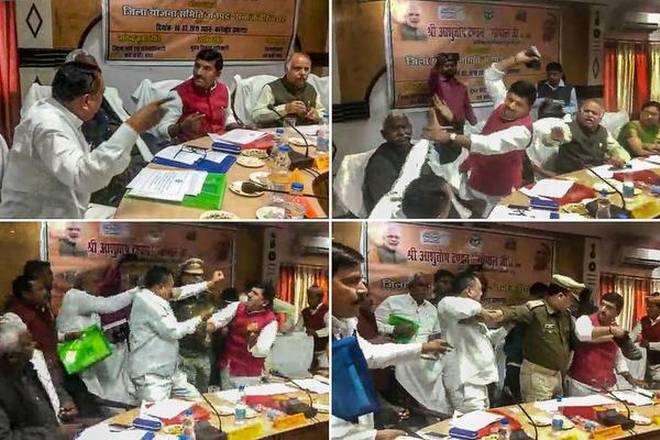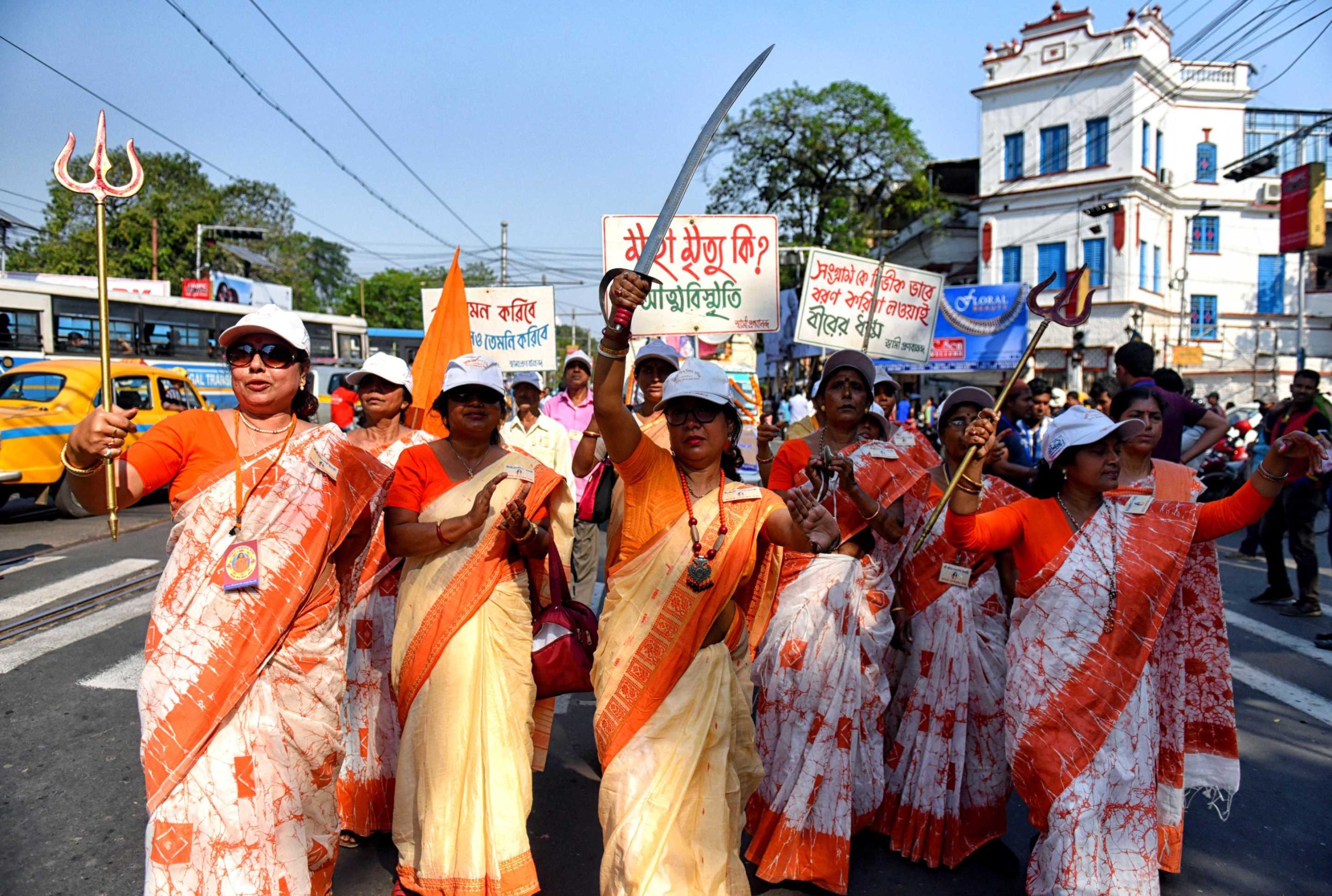Posted by Alaka Malwade Basu
Eugene Achike, the generous, pious, and publicly adored family man in Chimamanda Ngozi Adichie’s Purple Hibiscus, who at home terrorises his wife and children to a breaking point, is a character in a work of literary grace and beauty, but he is not someone it takes a big leap of imagination to conjure up. Pillars of the community, models of public rectitude, can too easily be epitomes of bad behaviour in private. We all know some
What I am looking for is the opposite: a believable story, real or imagined, about the public monster who is a private saint.
This question arose in my mind for the nth time a few weeks ago as I watched the video of Sharad Tripathi, the Member of Parliament from Uttar Pradesh’s Sant Kabir Nagar constituency, using his footwear to hit the local Member of the Legislative Assembly Rakesh Baghel. All because the former’s name was missing from the foundation stone of some new road and the latter declared that this was not a mistake but a deliberate omission authorised by the latter. I was even more amused by many of the tweets that accompanied this video; one of my favourites being History of India’s ‘mera boot
A little later, I was less amused as I noted that both the participants in this brave expression of accusation, defiance, and punishment were from the same state, religion, and the same political party. It was difficult not to think of that well-known-enough-to-now-be-trite line ‘first they came for the communists’.
Is it probable or even possible for such publicly virulent or violent holders of power to be gentle, non-threatening beings with their ‘loved’ ones?
Even later, the thought of that spectacle took me in yet another direction. To the wife of Shri Tripathi. Not just
My question is: How do these powerful men, who let their rage and resentment and sense of entitlement fly off the handle in public locations (and even often collaborate in recording of this expression of power), behave in the private sphere, where there is no-one to take notes, no embarrassing witnesses and no-one strong enough to stop their assaults? As the election scene hots up, we also get daily reports on new sexist slurs being cast on female candidates, supporters or politicians by their male counterparts – comments on their appearance, their professions, their morals, that publicly display the entrenched misogyny of our ruling classes. I would go further and add to these ruling classes the online abusers of any female poster whose views they do not like. These abuses are almost always deeply sexist, misogynist, and sexual.
Is it probable or even possible for such publicly virulent or violent holders of power to be gentle, non-threatening beings with their ‘loved’ ones? Can it be that the chappals of men like Mr. Tripathi otherwise experience only the wear and tear of use on feet, not on the backs and heads of close associates?
Also read: Is The Slew Of Giant Statue Announcements One Big Pissing Contest?
This is a serious question. Global and (especially) Indian statistics on gender-based domestic violence are disheartening
intuition suggests that the publicly violent individual is more rather than less likely to be privately violent too.
So ingrained is this culture of the strong punishing the weak that over 50% of women state that there are circumstances in which spousal violence against women is justified.
All these are likely underestimates because these are not matters on which many women feel comfortable reporting. And I cite the figures for Uttar Pradesh largely (but not only) because Mr. Tripathi and Mr. Sharma are from that state – nationally, 31% of women acknowledge having experienced physical or sexual violence.
There is another serious policy question buried in all this. When (if) we step up legal or social curbs on bad male behaviour in public, what might this do to actions in the private sphere? Will such punishing and shaming also chasten some men enough to make them better human beings at home or will it instead have the opposite impact of conserving their energies and their anger for even worse and more dangerous outbursts in private spaces?
The Western world has made such a fetish of the female spouses/partners of men in power regularly appearing in public holding hands, applauding or nodding in appreciation and agreement, that one has to wonder how many clenched teeth, grimaces or even tears hide behind these obligatory gestures. But the wives of politicians or public servants in India remain incognito for the most part, so it is difficult to look for signals in their body language.
To return to my unanswered question, are men who feel entitled to be violent in public likely to be even bolder to hit out in private? One can think of a few possible exceptions of course – unbounded (but rarely unconditional) love for a partner, public violence as an expression of bluster rather than actual rage, a normative protectiveness towards one’s kind – lynch the other religion’s suspected cow stealer and embrace one’s co-religionist lyncher.
Also read: Why Do Politicians Get Away With Sexist And Misogynist ‘Rants’?
However, overall, intuition suggests that the publicly violent individual is more rather than less likely to be privately violent too. It would be good to have some data to support or challenge this intuition. But it would be difficult to establish an empirical statistical correlation between bad behaviour in public and bad behaviour at home; the individual level data for this are virtually impossible to get. Perhaps someone can do a district or state level analysis of decorum in public spaces and levels of domestic violence.
It would be very intriguing indeed if an inverse relationship turned up somewhere.
Alaka Basu is a professor in the Department of Developmental Sociology at Cornell University and a Senior Fellow at the United Nations Foundation in Washington DC. For six years, she was also the Director of the South Asia Program at Cornell University. She has taught at Jawaharlal Nehru University in Delhi, the Harvard School of Public Health and Georgetown University.
Featured Image Source:The Hindu
About the author(s)
Guest Writers are writers who occasionally write on FII.




